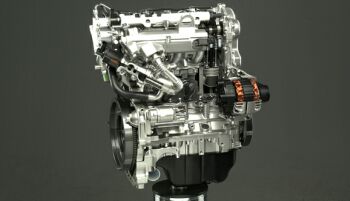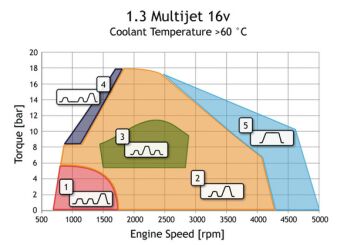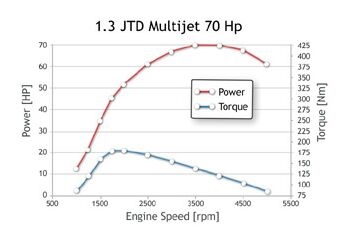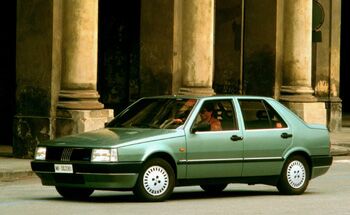| >
DIRECT INJECTION DIESEL ENGINES: A FIAT STORY
The new Multijet system has
allowed the Fiat Group to achieve an important new record in the diesel
engine field. All this was possible because we have been building up know-how
in this field since 1988, the date that marked the arrival of the Croma
TDI, the first direct injection diesel vehicle in the world. The Croma
engine was an outstanding result for the time and the first major step
toward automotive diesel engines with more efficient combustion.
The engineering, subsequently
copied by other manufacturers, meant that diesel cars were able to ensure
better performance coupled with lower fuel consumption. One problem remained:
excessive engine noise at low rpms and during speed transitions.
This was the cue for
the start of the Unijet story, i.e. the quest for a more advanced direct
injection system that could drastically reduce the problem of excessive
combustion noise. Some years later, this research effort brought us the
Unijet itself and significant benefits in terms of efficiency and fuel
consumption.
We reasoned that the problem
could be solved in one of two ways: we could be content with a passive
system and simply insulate the engine to prevent sound waves from reaching
the passenger compartment - or we could work actively to eliminate the
problem at its source by developing an injection system that actually reduced
combustion noise.
Fiat Group engineers chose
the second option and immediately went for the Common Rail principle after
considering and then rejecting other high-pressure injection systems. The
other systems do not allow pressure to be managed independently of rpm
and engine load and neither do they include a pre-injection, which are
essential attributes of the Unijet system.
The theory that lay behind
our research was originally developed by researchers at Zurich University
but had never previously been applied to a vehicle. This simple yet elegant
theory is based on the assumption that if you continue to push diesel into
a tank, the pressure inside will rise and the tank itself will become a
hydraulic accumulator (or rail), i.e. a reserve of pressurised fuel ready
for use.
Three years later, in 1990,
the Unijet system developed by Magneti Marelli, Fiat Research Centre and
Elasis on the Common Rail principle entered the pre-production stage. This
stage was completed in 1994, when Fiat Auto started to look for a partner
with leading-edge knowledge of diesel engine injection systems. The final
stage of the project, i.e. completion of development and industrial production,
was eventually entrusted to Robert Bosch.
In October 1997, eleven years
after the Croma TDI, the market welcomed another record-breaking car: the
Alfa 156 JTD. The new model was equipped with a revolutionary turbodiesel
engine that was to deliver previously unimaginable results.
Vehicles equipped with this
engine are incredibly noiseless and have all the alacrity of a petrol power
unit. They improve on the performance of a similar prechamber engine by
an average of 12 percent and reduce fuel consumption by 15 percent.
The Alfa 156 equipped with
a JTD engine won immediate success and similar power units soon appeared
on other Fiat Auto models and were adopted by many other motor manufacturers.
Now the turn has come for
a second generation of JTD engines, in other words the multiple injection,
16 valve engines that made their debut last autumn in Paris in the shape
of the 1.9 JTD engine fitted to the Alfa 156 and Alfa 147.
And that family has now been
extended by the pocket-sized 1.3 Multijet 16v. |




